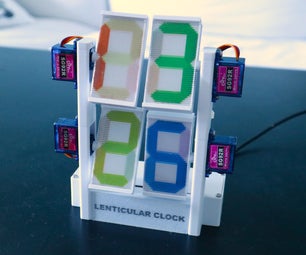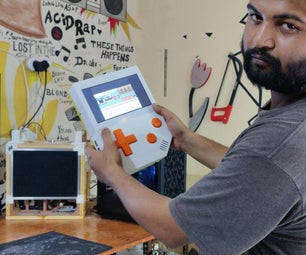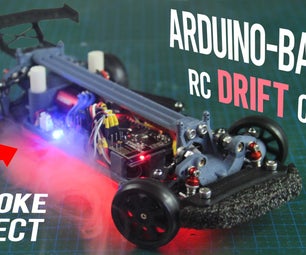Introduction: AUTOMATIC PET FOOD DISPENSER
Ever felt like wasting too much time feeding your pet? Ever had to call someone to feed your pets while you were on a holiday? I have tried to fix both these issues with my current school project: Petfeed!
Supplies
Raspberry Pi 3b
Bar Load Cell (10kg)
HX711 Load Cell Amplifier
Waterlevel Sensor (https://www.dfrobot.com/product-1493.html)
Ultrasonic Proximity Sensor
LCD 16-pins
2x stepper motor 28byj-48
2x stepper motor driver ULN2003
Step 1: Wiring
lots of cabling here. Get out your jumper cables and start pinning!
Step 2: Make Your Load Cell Usable
to use the load cell, we first need to attach it to two plates: a bottom plate, and a plate on which we will weigh our food.
The screws you need are a pair of M4 screws with matching bolts and a pair of M5 screws with matching bolts. I used a small drill to make the holes.
(pic: https://tutorials-raspberrypi.com/digital-raspberry-pi-scale-weight-sensor-hx711/)
Step 3: Normalised Database
data from our sensors has to be saved in a database. For the python files to connect to the database: see below.
then you also need a config file:
[connector_python]<br>user = *yourusername* host = 127.0.0.1 #if local port = 3306 password = *yourpassword* database = *yourdb* [application_config] driver = 'SQL Server'
Attachments
Step 4: Coding the Load Cell
import RPi.GPIO as GPIO<br>import threading import time from hx711 import HX711 from helpers.stepperFood import StepperFood from helpers.LCDWrite import LCDWrite from repositories.DataRepository import DataRepository <br>
After importing all of our libraries (note, we're using the HX711 Library to drive the load cell) we can start writing our actual code
TARRA_CONSTANT = 80600 GRAM_CONSTANT = 101
For finding out our constants, first set TARRA_CONSTANT = 0 and GRAM_CONSTANT = 1.
Next we need to find out the value our load cell reads when theres nothing being weighed. This value will be TARRA_CONSTANT.
As for GRAM_CONSTANT, simply take an object you know the weight of (i used a pack of spaghetti's), weigh it and divide the load cell readout with the actual weight of the object. For me this was 101.
class LoadCell(threading.Thread):
def __init__(self, socket, lcd):
threading.Thread.__init__(self)
self.hx711 = HX711(
dout_pin=5,
pd_sck_pin=6,
channel='A',
gain=64
)
self.socket = socket
self.lcd = lcd here we initialize the LoadCell class and map the pins.
def run(self):
try:
while True:
self.hx711.reset() # Before we start, reset the HX711 (not obligate)
measures_avg = sum(self.hx711.get_raw_data()) / 5
weight = round(
(measures_avg - TARRA_CONSTANT) / GRAM_CONSTANT, 0)
print("weight: {0}".format(weight))
DataRepository.insert_weight(weight)
data_weight = DataRepository.get_data_sensor(3)
historyId = data_weight["SensorsHistory"]
db_weight = data_weight["value"]
actionTime = data_weight["actionTime"]
self.socket.emit('data_weight', {
"id": historyId, "Weight": db_weight, "Time": DataRepository.serializeDateTime(actionTime)})
print("zou moeten emitten")
writeWeight = "weight: " + str(db_weight)
msg = "PETFEED"
LCDWrite.message()
if int(db_weight[:-2]) <= 100:
StepperFood.run()
time.sleep(20)
except Exception as e:
print("Error with weighing" + str(e))Step 5: Coding the Water Sensor
import time<br>import threading
from repositories.DataRepository import DataRepository
from RPi import GPIOGPIO.setmode(GPIO.BCM)
GPIO.setwarnings(False)
GPIO_Water = 18
GPIO.setup(GPIO_Water, GPIO.IN)
class WaterSensor(threading.Thread):
def __init__(self, socket):
threading.Thread.__init__(self)
self.socket = socket
self.vorige_status = 0
def run(self):
try:
while True:
water = self.is_water()
print(water)
status = water["status"]
action = water["action"]
DataRepository.insert_water(str(status), action)
data_water = DataRepository.get_data_sensor(2)
historyId = data_water["SensorsHistory"]
value = data_water["value"]
if value == "0":
value = "te weinig water"
else:
value = "genoeg water"
actionTime = data_water["actionTime"]
self.socket.emit('data_water', {
"id": historyId, "value": value, "Time": DataRepository.serializeDateTime(actionTime), "action": action})
time.sleep(5)
except Exception as ex:
print(ex)
print('error bij watersensor')
def is_water(self):
status = GPIO.input(GPIO_Water)
if self.vorige_status == 0 and status == 1:
print('water gedetecteerd')
sensorData = {"status": status, "action": "water gedetecteerd"}
self.vorige_status = status
status = GPIO.input(GPIO_Water)
if self.vorige_status == 1 and status == 1:
print('water aanwezig')
sensorData = {"status": status, "action": "water aanwezig"}
status = GPIO.input(GPIO_Water)
if self.vorige_status == 1 and status == 0:
print('water weg')
sensorData = {"status": status, "action": "water weg"}
self.vorige_status = status
status = GPIO.input(GPIO_Water)
if self.vorige_status == 0 and status == 0:
print('startpositie')
status = GPIO.input(GPIO_Water)
sensorData = {"status": status, "action": "startpositie"}
return sensorDataStep 6: Coding the Proximity Sensor
import time<br>import threading
from repositories.DataRepository import DataRepository
from RPi import GPIO
GPIO.setmode(GPIO.BCM)
GPIO.setwarnings(False)
GPIO_Trig = 4
GPIO_Echo = 17
GPIO.setup(GPIO_Trig, GPIO.OUT)
GPIO.setup(GPIO_Echo, GPIO.IN)
def current_milli_time(): return int(round(time.time() * 1000))
class UltrasonicSensor(threading.Thread):
def __init__(self, socket):
threading.Thread.__init__(self)
self.socket = socket
def run(self):
try:
last_reading = 0
interval = 5000
while True:
if current_milli_time() > last_reading + interval:
dist = self.distance()
print("Measured Distance = %.1f cm" % dist)
DataRepository.insert_proximity(dist)
data_prox = DataRepository.get_data_sensor(1)
historyId = data_prox["SensorsHistory"]
prox = data_prox["value"]
actionTime = data_prox["actionTime"]
self.socket.emit('data_proximity', {
"id": historyId, "Proximity": prox, "Time": DataRepository.serializeDateTime(actionTime)})
last_reading = current_milli_time()
except Exception as ex:
print(ex)
def distance(self):
# set Trigger to HIGH
GPIO.output(GPIO_Trig, True)
# set Trigger after 0.01ms to LOW
time.sleep(0.00001)
GPIO.output(GPIO_Trig, False)
StartTime = time.time()
StopTime = time.time()
# save StartTime
while GPIO.input(GPIO_Echo) == 0:
StartTime = time.time()
# save time of arrival
while GPIO.input(GPIO_Echo) == 1:
StopTime = time.time()
# time difference between start and arrival
TimeElapsed = StopTime - StartTime
# multiply with the sonic speed (34300 cm/s)
# and divide by 2, because there and back
distance = (TimeElapsed * 34300) / 2
return distanceStep 7: Coding the Stepper Motors
import RPi.GPIO as GPIO<br>import time
import threading
GPIO.setmode(GPIO.BCM)
GPIO.setwarnings(False)
control_pins = [12, 16, 20, 21]
for pin in control_pins:
GPIO.setup(pin, GPIO.OUT)
GPIO.output(pin, 0)
halfstep_seq = [
[1, 0, 0, 0],
[1, 1, 0, 0],
[0, 1, 0, 0],
[0, 1, 1, 0],
[0, 0, 1, 0],
[0, 0, 1, 1],
[0, 0, 0, 1],
[1, 0, 0, 1]
]
class StepperFood:
# 512 is 1 keer rond
def run():
for i in range(512):
for halfstep in range(8):
for pin in range(4):
GPIO.output(control_pins[pin], halfstep_seq[halfstep][pin])
time.sleep(0.001)
for pin in range(4):
GPIO.output(control_pins[pin], 0) This code is reusable for the other stepper motor, just set the control pin numbers to their repective pins and rename the class to StepperWater:
Step 8: Coding the LCD
Lots of code, but we're almost done.
The LCD class is included as file LCD.py
from helpers.LCD import LCD
E = 26
RS = 25
D0 = 19
D1 = 13
D2 = 24
D3 = 22
D4 = 23
D5 = 8
D6 = 7
D7 = 10
lcd = LCD(E, RS, [D0, D1, D2, D3, D4, D5, D6, D7])
class LCDWrite:
def message(msg):
try:
print("try")
lcd.init_LCD()
lcd.send_instruction(12)
lcd.clear_display()
lcd.write_message(msg, '1')
except:
print("error LCDWrite")Step 9: The End
final result: how we drew it up vs. how it ended up.








